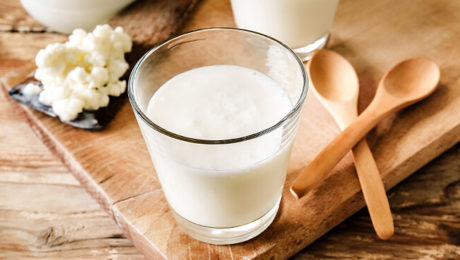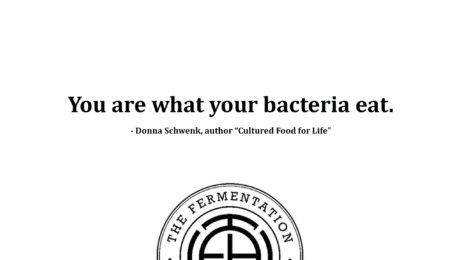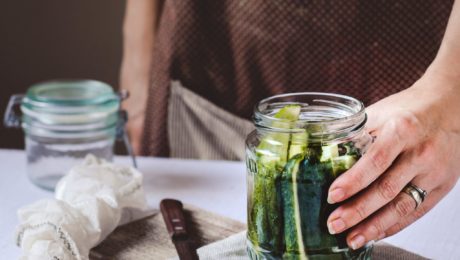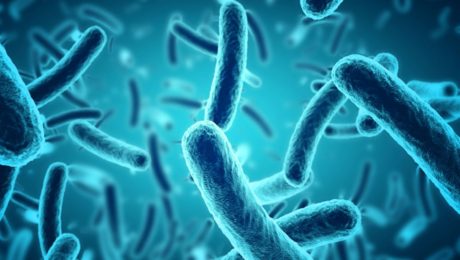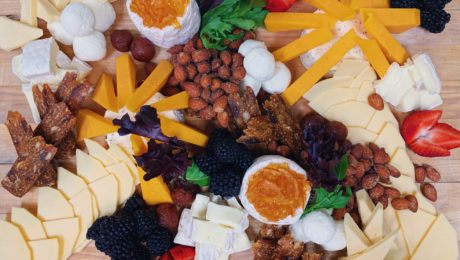Study Links Low COVID Mortality to Fermented Veggies
A new study links lower COVID-19 deaths to countries where the diet is rich in fermented vegetables. Researchers in Europe found in countries where the national consumption of fermented vegetables is high, the mortality risk for COVID-19 decreased by 35.4%. Results are currently preliminary and undergoing peer review. But, if the hypothesis is confirmed, “COVID-19 will be the first infectious disease epidemic to involve biological mechanisms that are associated with a loss of ‘nature,'” reads an article in News Medical. “Significant changes in the microbiome caused by modern life and less fermented food consumption may have increased the spread or severity of the disease, (researchers) say.”
The study was led by Dr. Jean Bousquet, a professor of pulmonary medicine at Montpellier University in France. After researching that diet may play a big role in determining how well people can fight the coronavirus, Bousquet says he now eats fermented foods multiple times a week.
Read more (News Medical Life Sciences)
Plant-Based Meat Next Major Fermentation Trend
Is plant-based meat the next major trend for fermentation? Specialists at the Institute of Food Technologists’ (IFT) July virtual event said more product formulators are using fermentation to optimize food flavor and preservation. They predict using fermentation to create plant-based meat will be the next big trend. Culinary experts like Noma in Denmark are already discovering “uncoupling traditional culture-substrate combinations is a viable way of discovery in fermentation,” says Jerome Diaz, a doctor at Wageningen University and Research. He said: “Traditionally, fermentation as a means of improving food quality has been the basis for many of the foods we enjoy today. Examples of such food products include beer, wine, cheese, sausages, sauerkraut, among many others. Over the years, increased understanding of microorganisms and the unique functionalities they bring to food allowed the use of fermentation for the production of specialty ingredients.”
Read more (Food Ingredients First)
$300K USDA Fermentation Science Grant
The fermentation science programs at three Tennessee colleges — Middle Tennessee State University, Columbia State Community College and Motlow State Community College — secured a major grant from the U.S. Department of Agriculture. The schools aim to use that $300,000 grant to increase enrollment in fermentation science degrees. The three-year grant will also be used to introduce fermentation concepts into organic chemistry, microbiology and mathematics courses, aiming to drive fermentation science as a career option.
“Students in general aren’t aware of what fermentation science is, much less that it’s actually agricultural,” said Troy Johnston, professor and director of the MTSU Fermentation Science program. “The grant seeks to get more students interested in agriculture as a career.”
He adds: “Agriculture is an applied STEM (science, technology, engineering and math) field, but it is not traditionally viewed this way. The grant provides an opportunity to connect the dots between STEM courses and agriculture and raise awareness of and increase the potential for a student to become interested in the applied STEM career that is fermentation science.”
Read more (Murfreesboro Voice)
- Published in Science
What’s the Harm in Eating Moldy Food?
A food science professor weighs in on the Sqirl restaurant mold scandal. The trendy Los Angeles eatery is famous for serving toast on a housemade jam without preservatives. But allegations surfaced that Sqirl was making the jam in an unlicensed kitchen where buckets of jam were covered in mold. Dr. John Gibbons, an assistant professor of food science at University of Massachusetts Amherst, is an expert on beneficial and detrimental molds. He says: “Because I study this stuff, and I’ve seen some of the really bad effects of different toxins, I don’t really take chances with it. That being said, fungal-fermented foods are some of my favorite foods — I just don’t trust it happening spontaneously.”
Read more (Grub Street)
- Published in Food & Flavor, Health, Science
How Kefir Affects Gut-Brain Connection
A new study shows kefir affects the microbiota-gut-brain axis. Researchers at APC Microbiome Ireland SFI Research Centre at University College Cork and Teagasc published their results in the journal Microbiome. They found that feeding mice kefir reduced stress-induced hormone signaling, reward-seeking and repetitive behavior. Interestingly, different types of kefir affected mice behavior and changed the abundance of gut bacteria. The researchers concluded that kefir should be studied as a dairy intervention to improve the mood and behavior in humans.
Read more (APC)
“You are what your bacteria eat.”
Colombian Government Declares “Sanitary Alert” Against Kombucha
INVIMA, Colombia’s National Food and Drug Surveillance Institute, released a “sanitary alert” against kombucha. The alert said: “It should be noted that ‘Scoby’ is an ingredient that has not been authorized by INVIMA for use in food and beverages.” INVIMA’s inspections found irregularities detected in locally-produced kombucha, and called out five Colombian and one U.S. kombucha brands for various “health situations,” like using the unapproved phrase “probiotic culture of Kombucha” on the label, conducting unauthorized alcohol fermentation and manufacturing the kombucha at a different address then what was provided to INVIMA. .
.
Kombucha Brewers International (@kombuchabrewers KBI) released a statement supporting kombucha brewers. The statement reads: “Kombucha is an incredibly safe product to brew at home as well as commercially. As a traditional fermented food, it’s microbial makeup and the organic acids it produces ensures that it is well preserved even without refrigeration. The role of fermented foods far precedes other types of preservation technology such as refrigeration, pasteurization or chemical preservatives. …Colombia has a long history of using fermented foods to provide nutrient dense foods for their native population. Cassava, cacao and maize have all been fermented through traditional processes to create almidón agrio, chicha, champús, masa agria, guarapo and many more.”
Read more (KBI)
- Published in Science
Fermented Sichuan Pickle Bacteria Reduce Cavities
Researchers in China found probiotics from lactobacilli bacteria in traditional Chinese pickles prevent dental cavities. The study, published in the journal “Frontiers in Microbiology,” evaluated 14 different types of Sichuan pickles from southwest China. Of the 14 pickles, 54 Lactobacilli strains were detected. But only one (plantarum K41) was found to significantly reduce “the incidence and severity of cavities.” The strain reduced the cavity-causing Streptococcus mutans bacteria by 98.4%. The S. mutans bacteria is found in plaque on human teeth.
According to the study: “Pickles are an integral part of the diet in the southwest of China. When fruits and vegetables are fermented, healthy bacteria break down the natural sugars. These bacteria, also known as probiotics, not only preserve foods but offer numerous benefits, including immune system regulation, stabilization of the intestinal microbiota, reducing cholesterol levels, and now inhibiting tooth decay.”
Read more (Science Daily)
What Fermenters Need to Know About Probiotics Regulations
Probiotics are the third most popular health product ingredient, with 62% of American consumers buying or wanting to buy them. However, only one-third of consumers say they understand probiotics. That confusion is evident in the courts, where consumer class action lawsuits are continually filed against probiotic food and beverages.
Meanwhile, the probiotics industry is pushing to update 25-year-old dietary supplement laws, there’s a new head of the Food and Drug Administration (FDA) and the lactobacillus taxonomy has been overhauled.
What does all this mean for fermented food and beverage brands? Ivan Wasserman, an attorney with expertise in foods and dietary supplements, says now is the time to plan for legal roadblocks, whether a new product or an existing brand. Wasserman shared his legal expertise during a Natural Products Insider webinar on probiotics regulations and class-action lawsuits.
How Does the FDA Define Probiotics?
It wasn’t until 1994 that probiotics were allowed to be sold as an FDA-approved dietary supplement. But the Dietary Supplement and Health Education Act (DSHEA) of 1994 does not directly define probiotics in their definition of supplements.
“You’ll notice there’s nothing in there about live microorganisms,” Wasserman says.
A line interpreted as a “catch-all” provision covers probiotics. It says a dietary substance can be anything “to supplement the diet by increasing the total dietary intake.” The FDA reviewed DSHEA in 2019, but new draft guidelines don’t provide additional clarification. The draft states: “Bacteria that have never been consumed as food are unlikely to be dietary ingredients.”
Wasserman says that’s not a correct assessment of probiotics. During the review, he noted government leaders who were around during DSHEA’s first passing said dietary supplement should not “be limited to things that are already in the food supply. That would really kill innovation, new strains of probiotics for example that were never in the food supply. It didn’t make sense to them that that would be the intent of congress. It would stifle innovation.”
As the FDA’s time is overwhelming focused on coronavirus, there has been no resolution to the definition of probiotics.
What are the Challenges in Labeling Probiotics?
Current regulations call for labeling probiotics in terms of weight. There is no special provision for live microorganisms; probiotics must be labelled like a vitamin or mineral.
“Unlike milligrams of calcium or vitamin C, we all know weight really isn’t that relevant (for probiotics) because dead bugs have weight, the size of the bug really doesn’t affect its efficacy,” Wasserman says. “It’s really how many live microorganisms you’re getting taking as part of a dietary supplement. That’s how all research is published, that’s how the government refers to it. So CFUs, or colony forming units, has become sort of a defacto way consumers and companies will recognize how much of a live microorganism a probiotic is in a live, dietary supplement.”
The International Probiotics Association petitioned the FDA on this measurement rule, asking for probiotics to be listed in terms of CFUs, not milligrams. The FDA said yes, CFUs would be allowed, but milligrams must also be included.
“It’s just confusing and silly,” Wasserman says.
False Advertising Claims Can Cost Brands Millions
In the past decade, the Federal Trade Commission (FTC) has actively sent warnings to brands making unverified probiotic health claims. The FTC’s first charge for probiotic advertising was filed in 2010 against Nestle BOOST Kid Essentials. Nestle did not have the scientific evidence to back up their health labelling. The FTC said Nestle used “deceptive advertising claims about the health benefits of the children’s drink,” like claiming it would reduce the risk of colds, flu and other respiratory tract infections, claims unproven by the FDA. Nestle also claimed BOOST would reduce children’s sick-day absences and decrease the duration of diarrhea, claims unverified “by at least two well-designed human clinical studies,” the FTC said.
“You have to be extremely careful not to imply or state disease prevention,” Wasserman says. “Probiotics certainly give a boost to the immune system, but…to the FTC, that was too strong of a claim, that this product can literally prevent children from getting sick. You can get in trouble for both imagery and claims. Be very careful.”
Other deceptive advertising cases include:
- In 2010, the largest truth in advertising lawsuit was settled against Dannon yogurt. Dannon claimed their Activia and DanActive yogurt products were “clinically” and “scientifically proven” to regulate digestion and boost the immune system. However, Dannon never proved their claims. Dannon had to pay $45 million in damages, and remove the words “clinically” and “scientifically proven” from their labels.
- In 2018, a class-action lawsuit was filed against Tropicana for marketing the added health benefits in their Essentials Probiotics fruit juices. The drink, though, included nearly the same amount of sugar as soda, and Tropicana did not have adequate scientific evident to support the nutritional claims.
- In 2019, a lawsuit was filed against Brew Dr Kombucha, alleging the kombucha was “falsely advertised and labeled as having a significantly higher amount of probiotic bacteria than the products sold actually contained.” Brew Dr’s kombucha bottle advertised billions of bacteria per bottle, but the plaintiff’s research found only 50,000 CFU’s of probiotic bacteria per bottle. The case is still pending.
- In May 2020, the National Advertising Division (NAD) recommended Benefiber remove the claims “100% natural,” “clinically proven to curb cravings” and “helps you feel full longer” from the Benefiber fiber supplements. Metamucil challenged Benefiber’s claims. Though Benefiber had tested their products and could provide scientific evidence, the NAD said the studies were not relevant to the consumer population. Benefiber’s studies were conducted on factory workers in China who live in a controlled living environment at the warehouse 24/7.
In the last few years, the FTC has been relatively quiet filing warnings against probiotic products. Wasserman theorizes it’s because the benefits of probiotics to digestive health have become well-accepted to the general public. Class-action lawsuits filed against probiotic products have also slowed down.
“That’s not to say they’re not being filed,” Wasserman adds. “We’re not seeing a letdown of those types of letters. Our little law firm is dealing with them on a daily basis for a wide variety of clients in a wide variety of industries. The good news is, because the benefits are so well known of probiotics, we haven’t seen a lot of cases actually being filed against probiotics.”
- Published in Science
Scientists Discover Which Bacteria Transfer to Gut
Scientists in Italy have discovered lactic acid bacteria in fermented food transfers to the gut microbiome. Though this is a widely accepted health benefit of fermented foods, there is little scientific research linking fermented food and the microbiome. The study looked at distribution of lactic acid bacteria (LAB) in humans based on location, age and lifestyle.
LAB genomes were reconstructed from about 300 foods and nearly 10,000 human fecal samples from humans from different continents.
The most frequent LAB food in the human feces: streptococcus thermophilus and lactococcus lactis, commonly found in yogurt and cheese.
“Our large-scale genome-wide analysis demonstrates that closely related LAB strains occur in both food and gut environments and provides unprecedented evidence that fermented foods can be indeed regarded as a possible source of LAB for the gut microbiome.”
Read more (Nature Communications)





